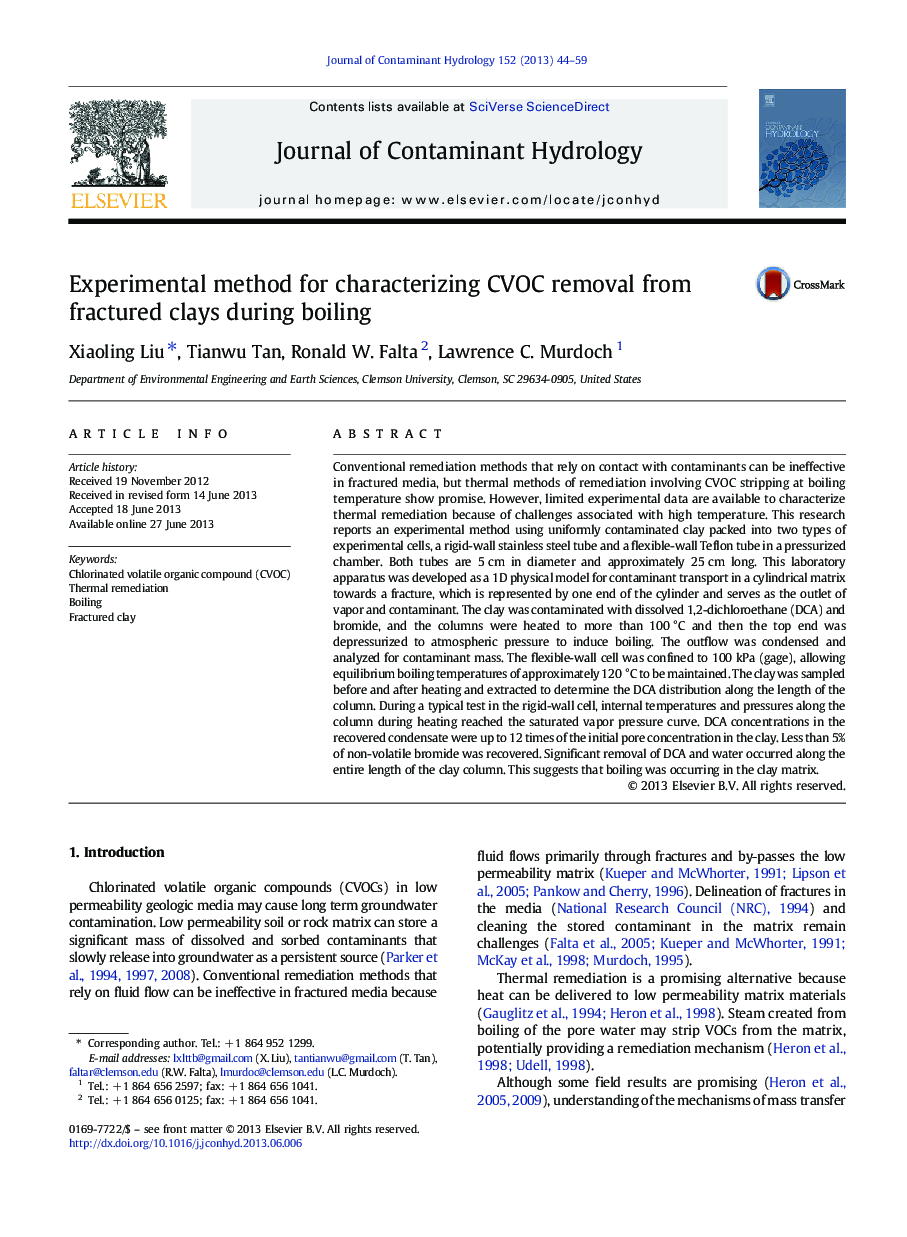| Article ID | Journal | Published Year | Pages | File Type |
|---|---|---|---|---|
| 6386577 | Journal of Contaminant Hydrology | 2013 | 16 Pages |
•An experimental apparatus was developed to characterize CVOC removal in heated clays.•This method offers two types of boundary conditions.•A nearly complete CVOC was recovered when one third of the pore water was removed.•Temperature and pressure within the clay verified boiling conditions in the matrix.
Conventional remediation methods that rely on contact with contaminants can be ineffective in fractured media, but thermal methods of remediation involving CVOC stripping at boiling temperature show promise. However, limited experimental data are available to characterize thermal remediation because of challenges associated with high temperature. This research reports an experimental method using uniformly contaminated clay packed into two types of experimental cells, a rigid-wall stainless steel tube and a flexible-wall Teflon tube in a pressurized chamber. Both tubes are 5 cm in diameter and approximately 25 cm long. This laboratory apparatus was developed as a 1D physical model for contaminant transport in a cylindrical matrix towards a fracture, which is represented by one end of the cylinder and serves as the outlet of vapor and contaminant. The clay was contaminated with dissolved 1,2-dichloroethane (DCA) and bromide, and the columns were heated to more than 100 °C and then the top end was depressurized to atmospheric pressure to induce boiling. The outflow was condensed and analyzed for contaminant mass. The flexible-wall cell was confined to 100 kPa (gage), allowing equilibrium boiling temperatures of approximately 120 °C to be maintained. The clay was sampled before and after heating and extracted to determine the DCA distribution along the length of the column. During a typical test in the rigid-wall cell, internal temperatures and pressures along the column during heating reached the saturated vapor pressure curve. DCA concentrations in the recovered condensate were up to 12 times of the initial pore concentration in the clay. Less than 5% of non-volatile bromide was recovered. Significant removal of DCA and water occurred along the entire length of the clay column. This suggests that boiling was occurring in the clay matrix.
